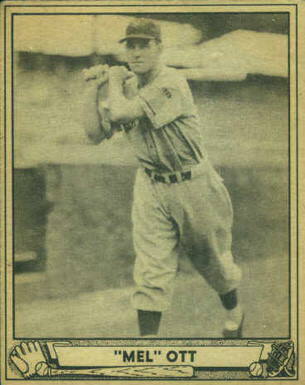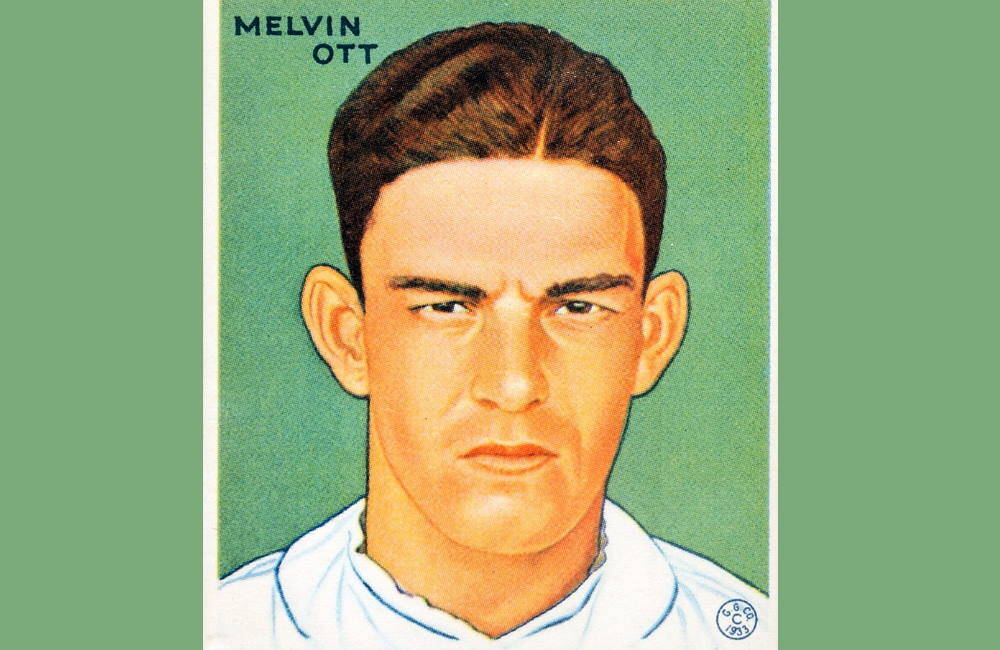For those who saw him play, Mel Ott might best be remembered for his odd batting stance and swing. It features a high leg kick and drawn out leg kick. It’s not something that anyone who saw it ever forgot.
The second thing is that Ott was beloved in New York City, where he played 22 years (his entire career) with the New York Giants.
“I never knew a baseball player who was so universally loved,” said manager Leo Durocher. “Why even when he was playing against the Dodgers at Ebbets Field, he would be cheered and there are no more rabid fans than in Brooklyn.”
He also put up the sort of numbers that made him a Hall of Famer, including a career 511 home runs and a lifetime .304 batting average.
Mel Ott Early Life
Melvin Ott was born on March 2, 1909, in Gretna, La., a suburb of New Orleans. He learned baseball as a small child from his father and two of his uncles, who both played on semi-pro teams. Despite being short, Ott was a gifted athlete.
Ott was a starter for his high school and local semi-pro team. At the age of 16, he was turned down by the local New Orleans Pelicans due to his height and had to instead play for the semi-pro team of a lumber company about 90 miles away from New Orleans.
Harry Williams, the company’s owner, recognized his talent and, while on a trip to New York, convinced John McGraw, manager of the Giants, to let Ott try out. He told Ott about it in a postcard. Ott didn’t think he was serious! So, Williams bought him a train ticket to New York when he returned from his trip.
Mell Ott MLB Career

By Play Ball cards, published by Bowman Gum – [1], Public Domain, https://commons.wikimedia.org/w/index.php?curid=19866499
Ott really shined in 1929, earning a reputation as a great hitter and outfielder. He set the National League record for runs scored away from home (79), which still exists today.
The Giants won the World Series in 1933 but struggled for the next few seasons, despite an amazing performance from Ott. They won the pennant in 1936 and 1937, only to lose both World Series to the Yankees. The New York Giants continued to decline throughout the rest of the decade, as despite Ott’s amazing skills, the rest of the team’s stars were beginning to age.
In 1941, Ott became a player-manager, and led the Giants in a stellar year, finishing in third place. In 1942, however, Major League Baseball felt the effects of World War II. The Giants lost many established players, and Ott struggled to manage what was left of the club as his own skills started to decline.
The Giants finished in last place in 1942, and 1943 was Ott’s worst season. They improved slightly over the next two years, but 1946 was a disaster (a 61-93 record. Ott stopped playing after that season, though he continued to manage the team.
After Baseball
Ott managed the Giants through the 1947 and half of the 1948 season but finally stepped down due to the Giants’ disappointing performance under his management.
For the next ten years, he took various baseball-related jobs, including being an announcer for the Detroit Tigers in 1956, but died in 1958 due to injuries sustained in a car accident in Bay Saint Louis, Mississippi. He was only 49 years old.
Ott is still remembered for his style of play. He was put on a stamp in 2006. And in 1989, he is one of the players that play in the cornfield in the movie “Field of Dreams.”


Leave A Comment